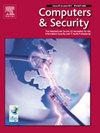基于典型场景下车辆行驶特征验证的异常身份识别模型
IF 4.8
2区 计算机科学
Q1 COMPUTER SCIENCE, INFORMATION SYSTEMS
引用次数: 0
摘要
V2X (Vehicle-to-everything)实现了车辆与外界之间的信息交换和共享,从而提高了驾驶安全性,减少了交通拥堵,提高了交通效率。然而,这种海量数据的信息交换和传输也暴露了许多攻击面,可能导致车辆被盗、信息泄露、驾驶失败等安全事件。传统的通过信息安全保障交通信息交互的方法存在局限性。提出了一种基于车辆驾驶特征验证的异常身份识别创新模型。该模型旨在保证不同来源的速度数据、传输类型数据和传感器获得的感知数据之间的一致性。该模型基于多类支持向量机(multi-class support vector machine,简称multi-class SVM)识别车辆行为和双向门控循环单元(BiGRU)神经网络预测车速。设计了一种可靠的计算方法,用于计算跟车和变道场景下的预测速度与实际采集速度之间的误差。使用Next Generation Simulation数据集对模型进行训练和测试。实验结果表明,多类SVM模型的总体识别精度为95.50%,BiGRU模型的预测精度达到cm/s数量级,模型的总体识别精度为90%。PKI (public key infrastructure)方案是目前车联网信息安全的主流方案。本文分析了所提出的异常身份识别模型应用于PKI框架的可行性,该模型可以通过判别车速来有效识别异常车辆身份,有效保证车辆与外部网络(4G/5G/V2X)通信的安全性。本文章由计算机程序翻译,如有差异,请以英文原文为准。
Anomalous identity recognition model based on vehicle driving characteristic verification in typical scenarios
Vehicle-to-everything (V2X) enables the exchange and sharing of information between vehicles and the outside world, which improves driving safety, reduces traffic congestion, and enhances traffic efficiency. However, this information exchange and transmission of massive data also exposes many attack surfaces, which may result in security incidents such as vehicle theft, information leakage, and driving failure. Traditional methods to ensure traffic information interaction through information security have limitations. This paper proposes an innovative model for anomalous identity recognition based on vehicle driving characteristic verification. The model aims to ensure consistency among the speed data from different sources, types of transmission data, and perception data obtained by sensors. The model is based on a multi-class support vector machine (multi-class SVM) to identify vehicle behavior and a bidirectional gated recurrent unit (BiGRU) neural network to predict vehicle speed. A credible calculation method was designed to calculate the error between the predicted speed and the actual collected speed in the car-following and lane-changing scenarios. The Next Generation Simulation dataset was used to train and test the models. The experimental results showed that the overall recognition accuracy of the multi-class SVM model was 95.50 %, the predicted precision with an order of magnitude of cm/s was achieved by the BiGRU model, and the overall recognition accuracy of the model was >90 %. The public key infrastructure (PKI) scheme is currently the mainstream scheme of information security in the Internet of Vehicles. This paper analyzes the feasibility of the proposed anomalous identity recognition model applied in the PKI framework, which can effectively identify anomalous vehicle identities by discriminating the vehicle speed and effectively ensure the security between a vehicle and the external network communication (4G/5G/V2X).
求助全文
通过发布文献求助,成功后即可免费获取论文全文。
去求助
来源期刊

Computers & Security
工程技术-计算机:信息系统
CiteScore
12.40
自引率
7.10%
发文量
365
审稿时长
10.7 months
期刊介绍:
Computers & Security is the most respected technical journal in the IT security field. With its high-profile editorial board and informative regular features and columns, the journal is essential reading for IT security professionals around the world.
Computers & Security provides you with a unique blend of leading edge research and sound practical management advice. It is aimed at the professional involved with computer security, audit, control and data integrity in all sectors - industry, commerce and academia. Recognized worldwide as THE primary source of reference for applied research and technical expertise it is your first step to fully secure systems.
 求助内容:
求助内容: 应助结果提醒方式:
应助结果提醒方式:


